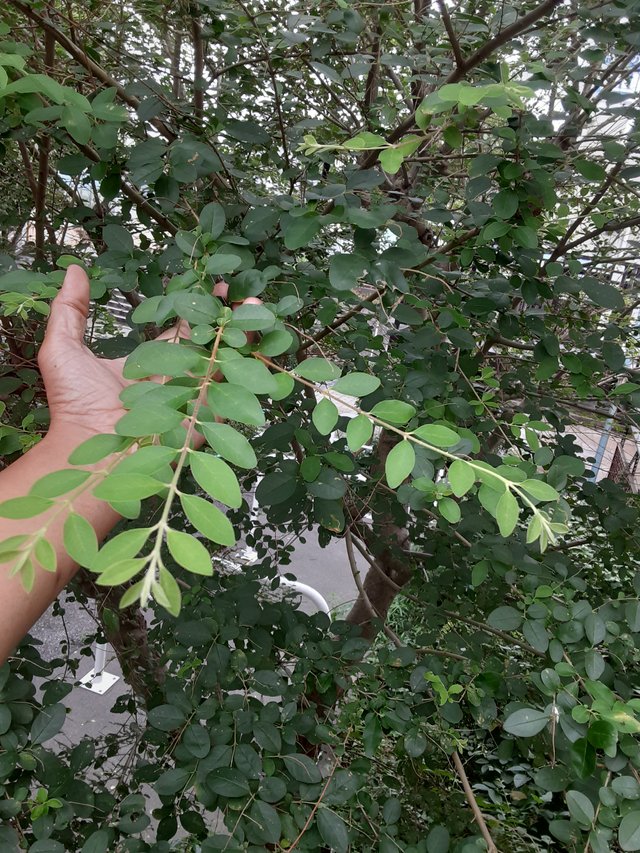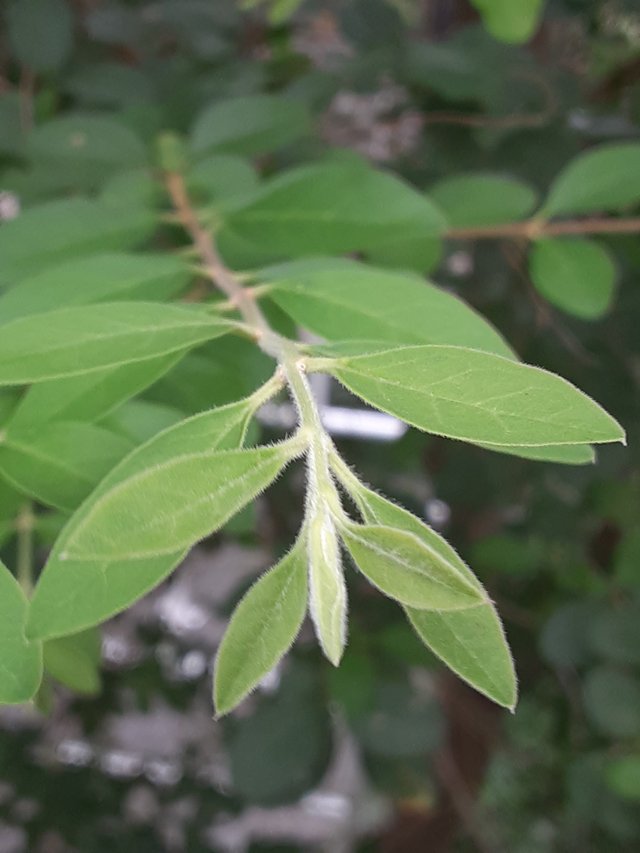
Ligustrum sinense, also known as Chinese Privet, is a common evergreen or semi-evergreen shrub native to Asia. It's a popular choice for landscaping due to its dense growth habit and tolerance for various conditions. However, it's important to note that it's considered invasive in many areas.
Leaves of Ligustrum sinense:
- Arrangement: The leaves of Chinese Privet are arranged in an opposite pattern on the stems. This means that two leaves grow directly across from each other at each node.
- Shape and Size: The leaves are typically elliptic to oval in shape, with pointed tips and entire (smooth) or slightly wavy margins. They range in size from 2 to 7 centimeters (0.8 to 2.8 inches) long and 1 to 3 centimeters (0.4 to 1.2 inches) wide.
- Color and Texture: The leaves are a dull dark green color on the upper surface and a lighter green underneath. They have a smooth, leathery texture.

Significance of the Leaves:
- Dense Foliage: The dense, year-round foliage of Chinese Privet is one of its main selling points for landscaping. It creates a thick hedge or screen, providing privacy and wind protection.
- Seasonal Change: In some climates, the leaves of Chinese Privet may take on a slightly reddish tinge in the fall before dropping. However, in most cases, they remain green throughout the year.
Beyond the Leaves:
While the leaves provide year-round visual interest, the most notable feature of Ligustrum sinense is its flowers. These small, white flowers bloom in clusters in late spring and have a somewhat unpleasant fragrance. The flowers are followed by small, blue-black berries that are attractive to birds but can be poisonous to humans and pets if ingested.
Fast Growing, But Invasive:
Chinese Privet is a fast-growing shrub that can reach heights of 6 to 15 feet (1.8 to 4.6 meters) and widths of up to 10 feet (3 meters) within a few years. However, its aggressive growth habit can become a problem. It can easily spread by seed or sucker and overtake native plants, disrupting ecosystems. Due to this invasive nature, many areas discourage or even ban the planting of Ligustrum sinense.
Alternatives to Consider:
If you're looking for a privacy hedge or screen but are concerned about the invasive potential of Chinese Privet, there are several good alternatives to consider. Here are a few suggestions:
- American Holly (Ilex opaca): This native North American shrub has glossy green leaves and bright red berries in winter.
- Arborvitae (Thuja spp.): These evergreen trees come in various sizes and offer a variety of foliage colors.
- Viburnum (Viburnum spp.): There are many species of viburnum, some of which have beautiful flowers and attractive berries.
Overall, Ligustrum sinense has both positive and negative attributes. Its dense foliage and fast growth make it a good choice for hedges and screens, but its invasive potential is a major concern. If you're considering planting this shrub, be sure to research local regulations and choose a responsible alternative if necessary.
Ref.:
 |  |
Upvoted! Thank you for supporting witness @jswit.
Downvoting a post can decrease pending rewards and make it less visible. Common reasons:
Submit
!thumbup
Downvoting a post can decrease pending rewards and make it less visible. Common reasons:
Submit
Hello @leafoflife! You are Phenomenal!
command: !thumbup is powered by witness @justyy and his contributions are: https://steemyy.com
More commands are coming!
Downvoting a post can decrease pending rewards and make it less visible. Common reasons:
Submit